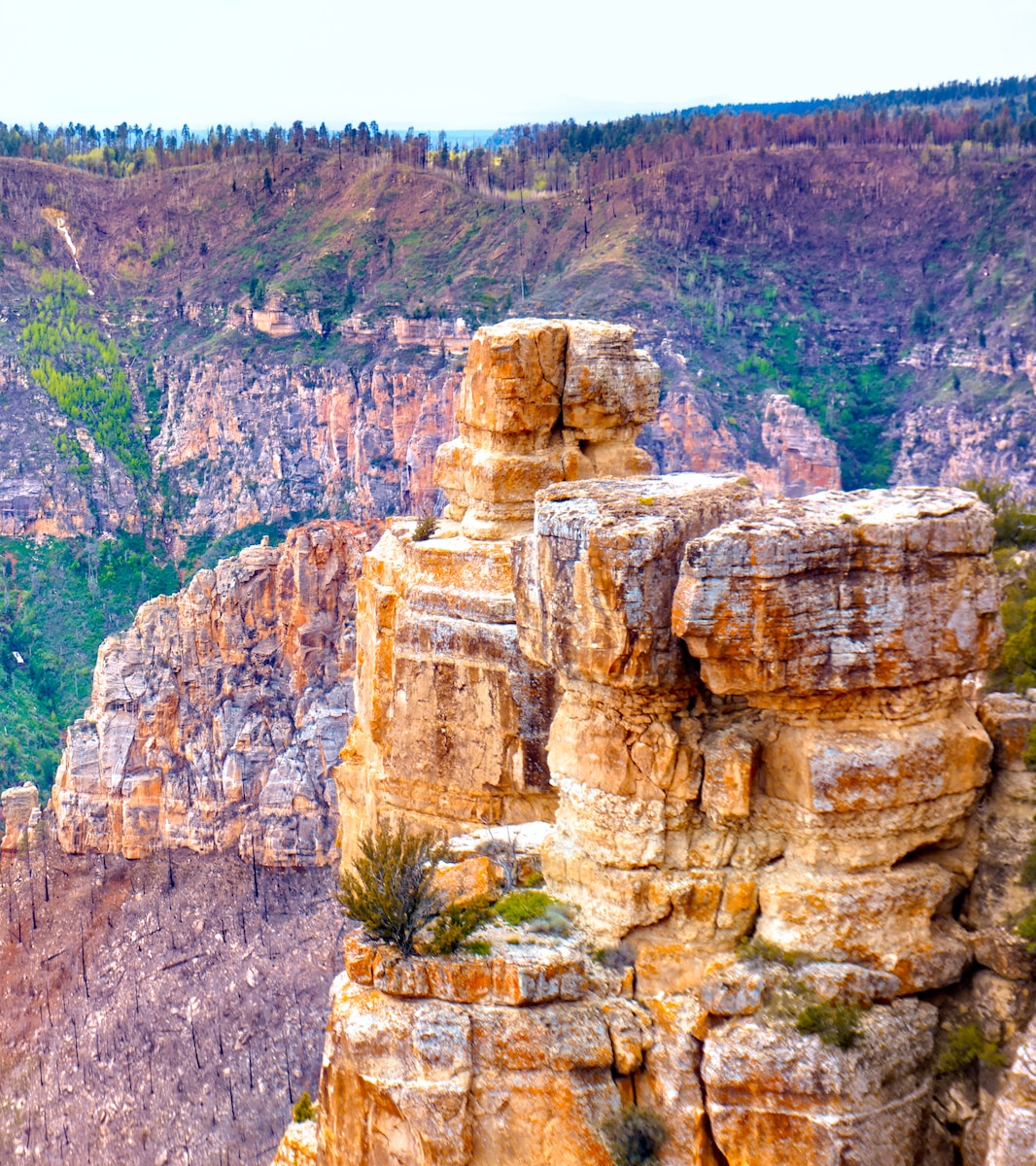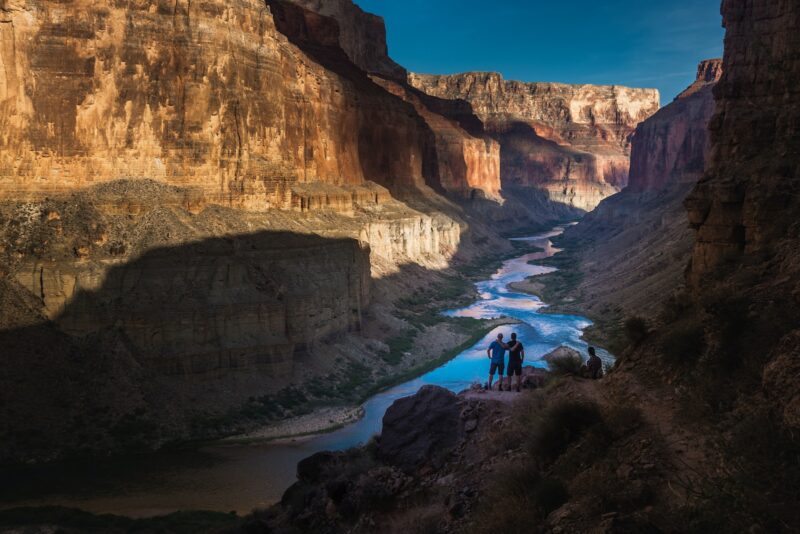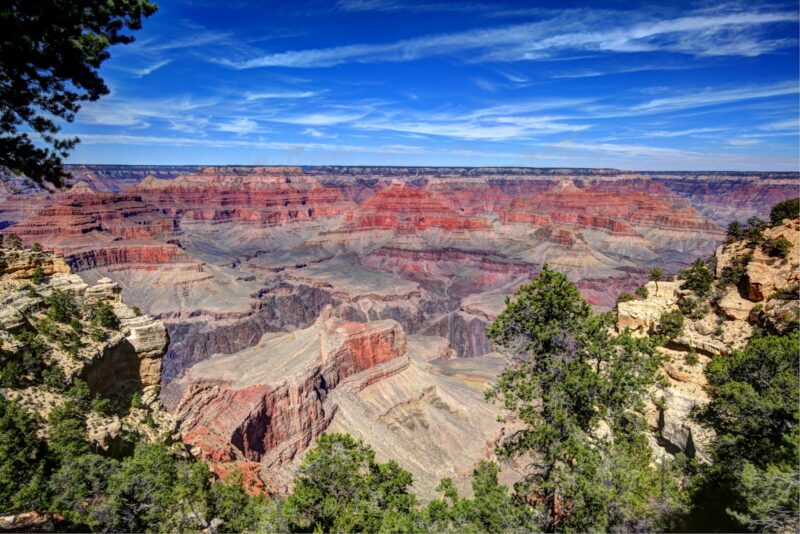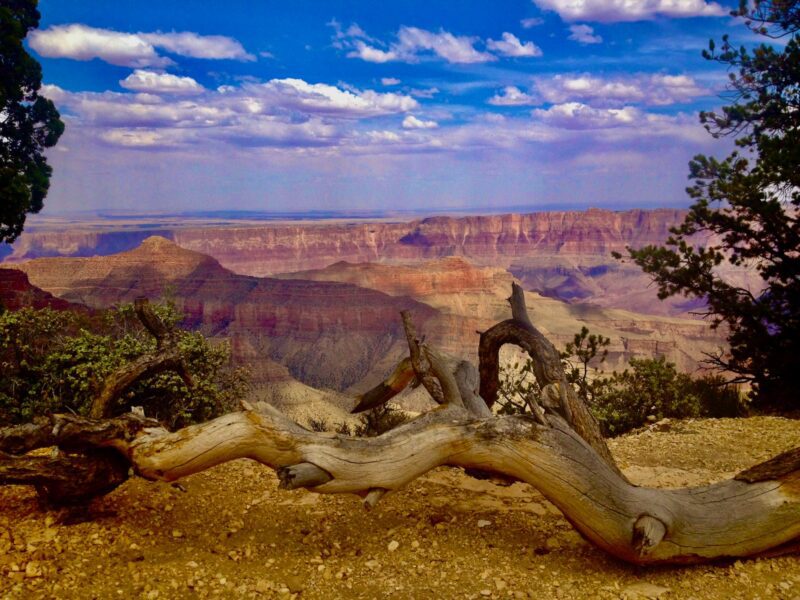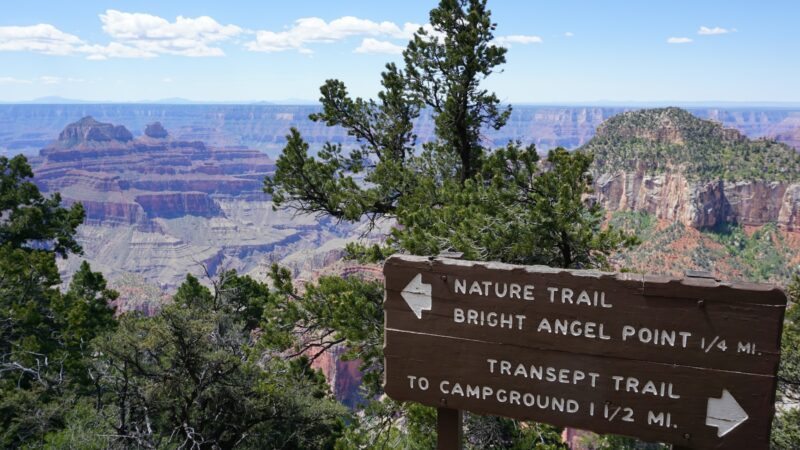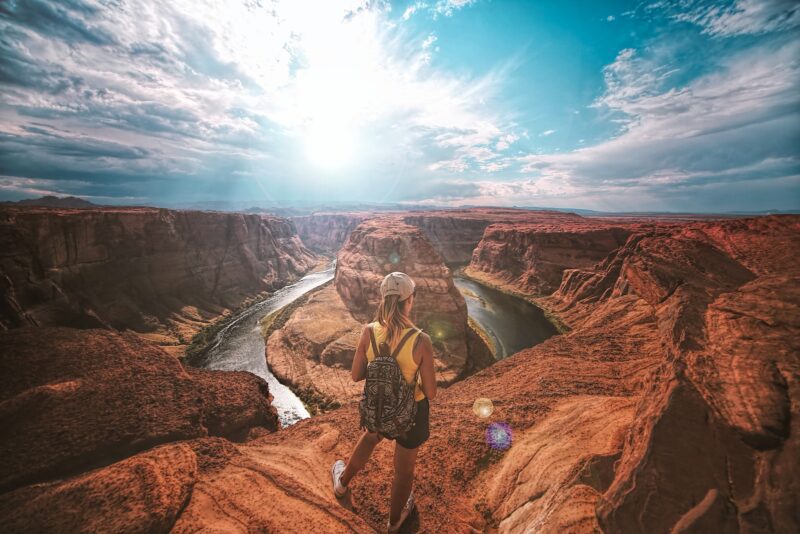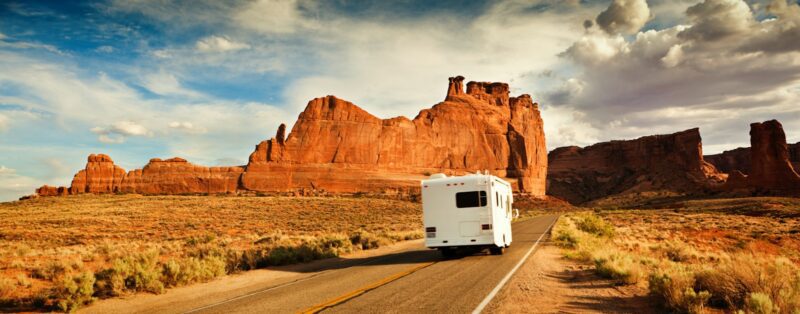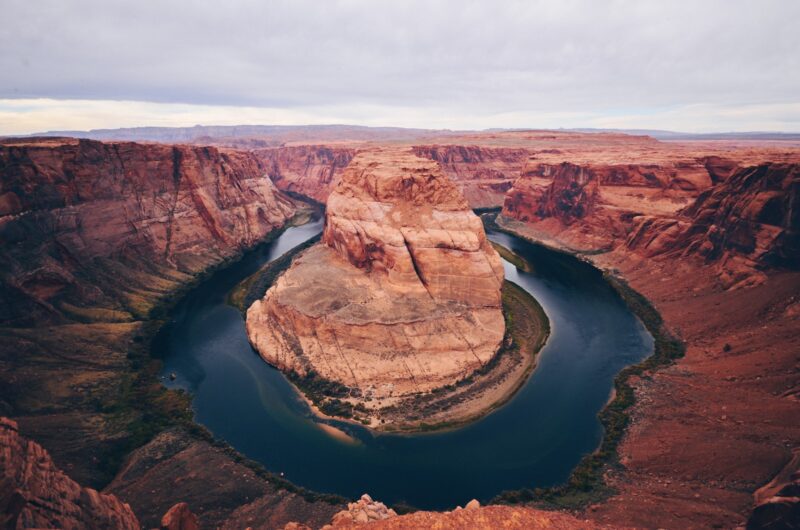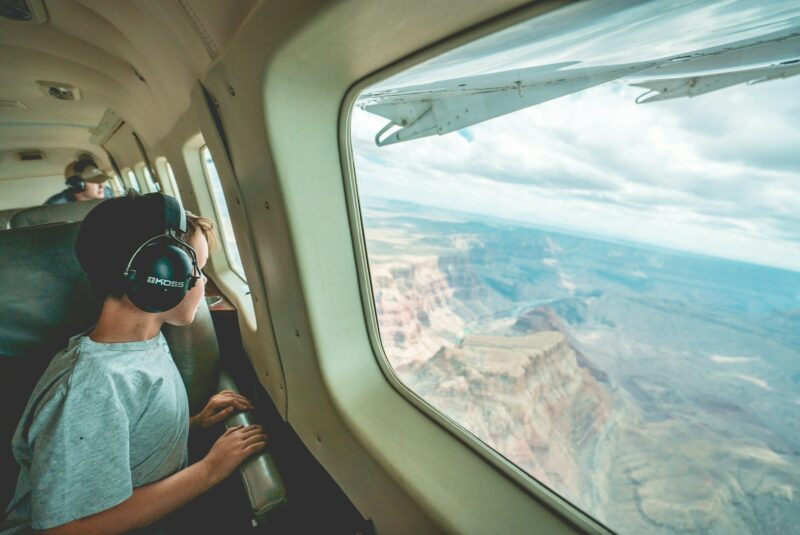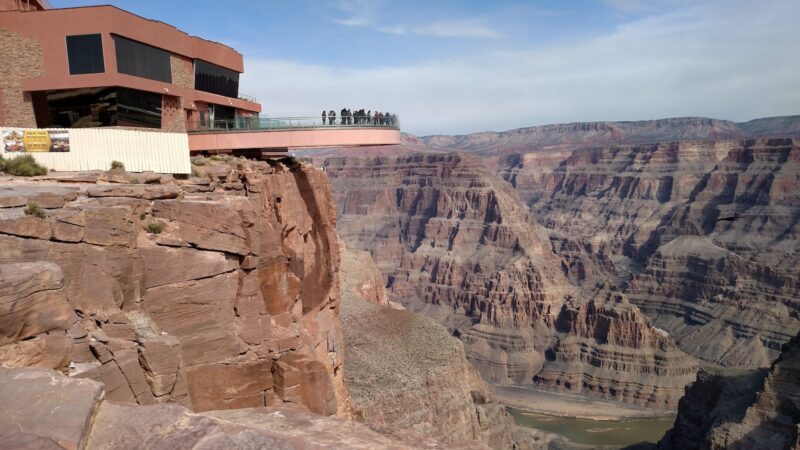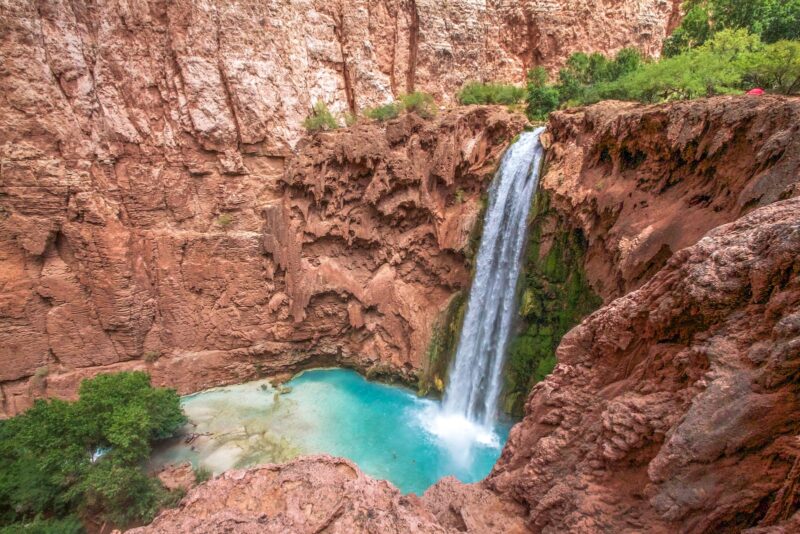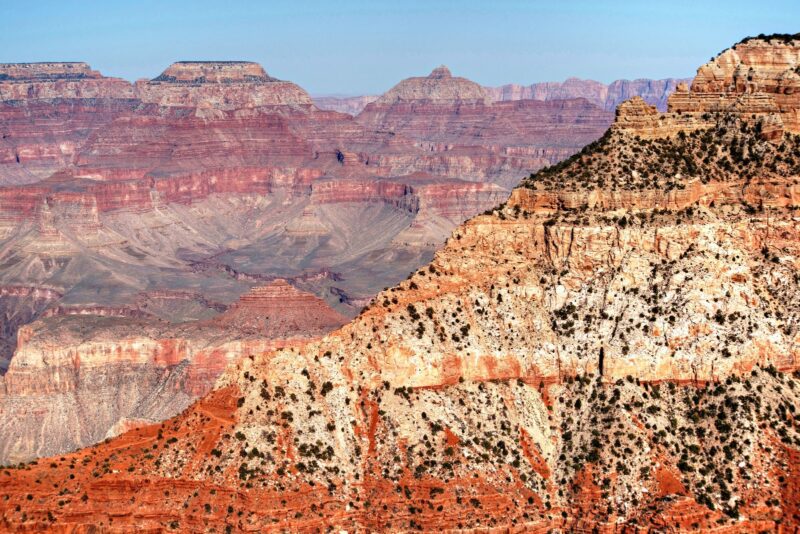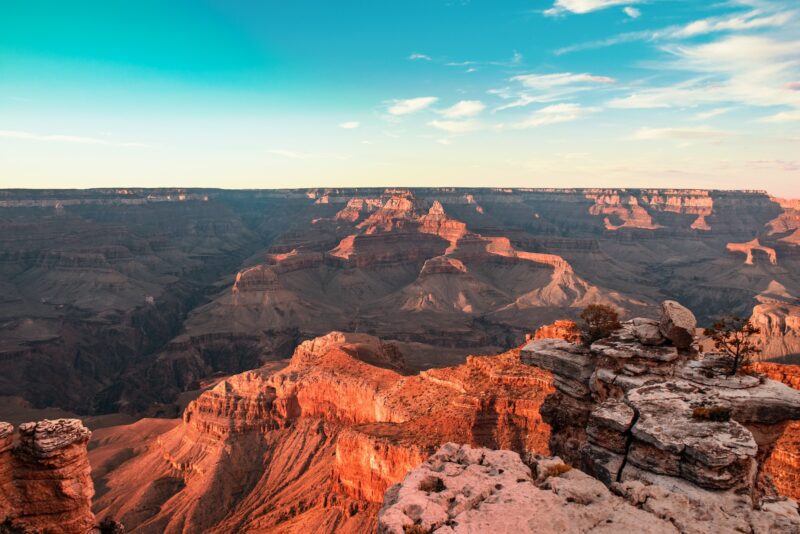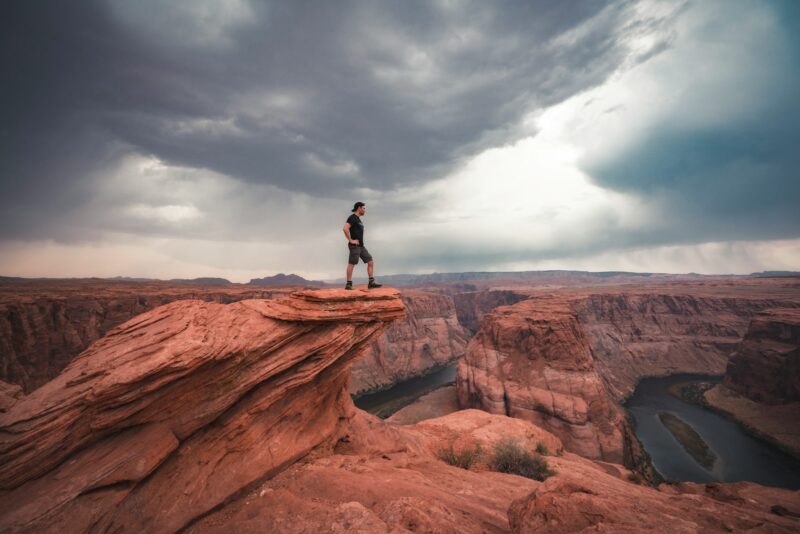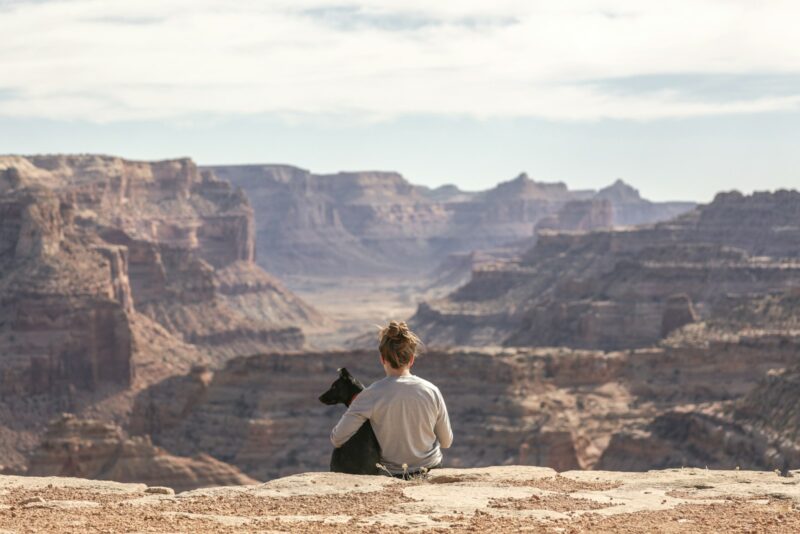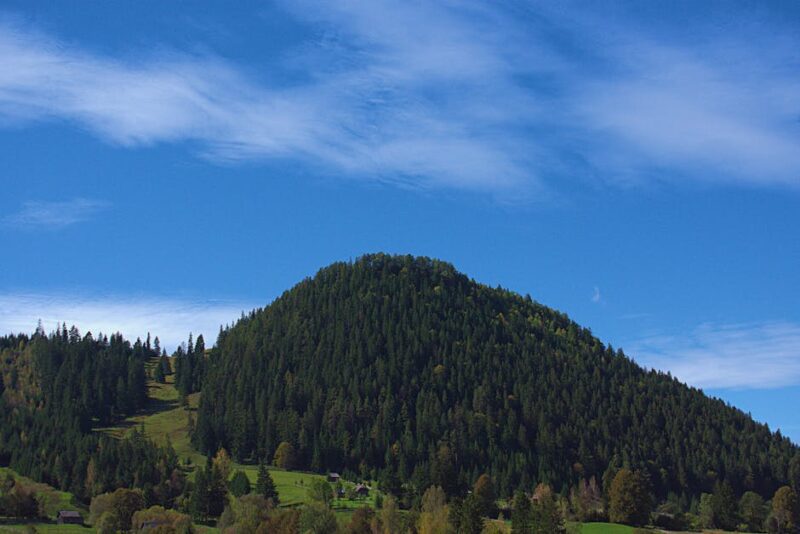The Grand Canyon is one of the most breathtaking natural wonders in the world, attracting millions of visitors every year. It is a massive, steep-sided gorge carved by the Colorado River, located in the state of Arizona, USA. The Grand Canyon is approximately 277 miles long, up to 18 miles wide, and over a mile deep, making it one of the most impressive geological features on the planet.
Planning a trip to the Grand Canyon can be overwhelming due to the sheer size of the park and the many options available for exploring it. However, with the right information and preparation, visitors can have an unforgettable experience. This ultimate travel guide to the Grand Canyon will provide everything you need to know to plan your trip, including the best time to visit, where to stay, what to see and do, and much more.
Table of Contents
ToggleOverview of the Grand Canyon
The National Park Service manages the Grand Canyon which is a designated national park. The Grand Canyon National Park is one of the oldest national parks in the United States, having been established in 1919. It covers nearly 1.2 million acres and is home to a diverse array of wildlife and plant species. It is a popular tourist destination, attracting millions of visitors worldwide each year.
Visitors to the Grand Canyon can enjoy a range of activities, including hiking, camping, and sightseeing. There are numerous trails throughout the park, ranging from easy to strenuous, that offer breathtaking views of the canyon. Visitors can also take a helicopter tour of the canyon, which provides a unique perspective and stunning views of the Colorado River and Painted Desert.
Getting There
Getting to the Grand Canyon can be an adventure in and of itself. Visitors can access the park from various locations, including Las Vegas, Flagstaff, and Phoenix.
Las Vegas is a popular starting point for those looking to visit the Grand Canyon. It is located approximately 275 miles from the South Rim and 120 miles from the West Rim. Visitors can rent a car and drive to the park or take a guided tour.
Flagstaff, located about 80 miles from the South Rim, is another popular starting point. Visitors can take a rental car or shuttle service from Flagstaff to the park.
Phoenix, located about 230 miles from the South Rim, is also a starting point for those looking to visit the Grand Canyon. Visitors can take a rental car or shuttle service from Phoenix to the park.
When planning a trip to the Grand Canyon, it is important to consider the time of year and weather conditions. During the winter months, roads to the park may be closed due to snow and ice. It is recommended to check weather and road conditions before embarking on a trip.
Visitors should also consider the type of transportation they will use to get to the park. Rental cars are a popular option, but visitors should be aware of the limited parking available at the park. Shuttle services and guided tours are often preferred alterative options.
Best Time to Visit
The Grand Canyon is a year-round destination, but the best time to visit depends on what you’re looking for. The peak season is from May through September, when the weather is warm and sunny, and the crowds are at their largest. If you want to avoid the crowds, the best times to visit are March through May and September through November.
Fall is a great time to visit the Grand Canyon as temperatures start to cool and crowds start to thin. High temperatures range from the mid-50s to mid-70s with low temperatures ranging from the mid-20s to mid-40s. If you’re planning a hiking trip, fall is the perfect time to go. The weather is mild, and the foliage is beautiful.
March through May is another great time to visit the Grand Canyon. The weather is mild, and the crowds are thin. High temperatures range from the mid-50s to mid-70s with low temperatures ranging from the mid-20s to mid-40s. This is a great time to see the wildflowers in bloom and to enjoy the park’s many hiking trails.
In summary, the best time to visit the Grand Canyon depends on what you’re looking for. If you want to avoid the crowds, the best times to visit are March through May and September through November. If you’re looking for warm weather and plenty of activities, the peak season of May through September is the best time to go.
Exploring the South Rim
The South Rim of the Grand Canyon is the most popular destination in the park, offering breathtaking vistas and a variety of activities for visitors. The Rim Trail is a must-see attraction, stretching for 13 miles along the rim and offering stunning panoramic views of the canyon. The trail is accessible to hikers of all levels and is paved in some areas, making it a great option for families with young children or those with mobility issues.
Grand Canyon Village is the hub of activity on the South Rim, offering a variety of lodging options, restaurants, and shops. El Tovar, a historic hotel located right on the rim, is a popular place to stay for visitors looking for a luxurious experience. The hotel features a fine dining restaurant and a lounge with stunning views of the canyon.
For those interested in Native American culture, Desert View is a must-visit attraction on the South Rim. The Watchtower, a 70-foot tower built in 1932, offers stunning views of the canyon and features exhibits on the history and culture of the Native American tribes who have lived in the area for centuries.
Exploring the South Rim of the Grand Canyon is an unforgettable experience, offering visitors the chance to witness the beauty and majesty of one of the world’s most awe-inspiring natural wonders.
Adventures at the North Rim
For those seeking a quieter and more secluded experience, the North Rim of the Grand Canyon is the perfect destination. Open seasonally from mid-May to mid-October, the North Rim offers visitors a chance to escape the crowds and experience the natural beauty of the Grand Canyon in solitude.
One of the must-see attractions at the North Rim is the Grand Canyon Lodge, a historic log cabin built in the 1920s that offers stunning views of the canyon. Visitors can enjoy a meal at the lodge’s restaurant or simply relax on the porch and take in the breathtaking scenery.
For those looking to spend the night, the North Rim Campground offers a variety of campsites for tents and RVs. The campground is located in a beautiful pine forest and is just a short walk from the Grand Canyon Lodge.
Hiking is a popular activity at the North Rim, and there are a variety of trails to choose from, ranging from easy walks to challenging hikes. The North Kaibab Trail is a popular choice, offering hikers stunning views of the canyon and access to the Colorado River.
For those looking for a more adventurous experience, there are also opportunities for backcountry camping and backpacking at the North Rim. Permits are required and can be obtained from the Backcountry Information Center.
In summary, the North Rim of the Grand Canyon offers visitors a chance to experience the natural beauty of the canyon in a more secluded and peaceful setting. Whether you’re looking for a relaxing getaway or an outdoor adventure, the North Rim has something for everyone.
Hiking in the Grand Canyon
Hiking in the Grand Canyon is a must-do activity for any visitor. The Grand Canyon offers a variety of hiking trails, ranging from easy walks along the rim to challenging hikes that descend thousands of feet into the canyon.
Two of the most popular trails for day hikes are the Bright Angel Trail and the South Kaibab Trail. The Bright Angel Trail is a 12-mile round-trip hike that descends 4,380 feet to the Colorado River. The South Kaibab Trail is a 6.8-mile round-trip hike that descends 2,060 feet to Cedar Ridge. Both trails offer stunning views of the canyon and are well-maintained with restrooms and water stations along the way.
For those looking for a more challenging hike, the Rim-to-Rim hike is a bucket-list item. This hike is a 23.5-mile trek that takes hikers from one side of the canyon to the other. The hike involves a steep elevation change of over 10,000 feet and is recommended for experienced hikers only.
Hiking Tips
When hiking in the Grand Canyon, it is important to wear appropriate footwear such as hiking boots, as the trails can be rocky and uneven. It is also important to carry plenty of water and snacks, as well as a first-aid kit and other necessary gear.
For those interested in backpacking and exploring the backcountry of the Grand Canyon, permits are required and can be obtained through the National Park Service. It is important to plan ahead and be prepared for the challenging terrain and weather conditions.
Overall, hiking in the Grand Canyon is a unique and unforgettable experience that should not be missed. Whether it’s a leisurely stroll along the rim or a challenging trek into the depths of the canyon, there is a hike for every level of adventurer.
Camping Options
Camping is a popular way to experience the Grand Canyon and enjoy its stunning natural beauty. There are several campgrounds available within the park, including Mather Campground and Desert View Campground.
Mather Campground is located in Grand Canyon Village and is open year-round. It offers over 300 campsites, including some that can accommodate RVs up to 30 feet in length. Reservations are strongly recommended during peak season, and can be made up to six months in advance.
Desert View Campground is located at the east entrance of the park and is open seasonally from mid-April to mid-October. It offers 50 campsites on a first-come, first-served basis. This campground is a great option for those looking for a quieter, more secluded camping experience.
To camp at either of these campgrounds, visitors must obtain a camping permit. Permits can be obtained online or in person at the park’s Backcountry Information Center. During peak season, permits for Mather Campground can be difficult to obtain, so visitors are encouraged to plan ahead and consider alternative camping options.
In addition to these campgrounds, Trailer Village offers RV camping with full hookups and is located near the South Rim. Reservations are strongly recommended, especially during peak season.
It’s important to note that camping in the Grand Canyon requires extensive preparation and planning. Visitors should be aware of the park’s regulations and safety guidelines.
Water Activities
The Grand Canyon offers a variety of water activities for visitors to enjoy. The Colorado River, which runs through the canyon, is a popular spot for rafting. There are several companies that offer guided rafting tours, ranging from half-day trips to multi-day excursions. These tours provide a unique opportunity to experience the canyon from a different perspective and see its beauty up close.
For those who want to explore the canyon floor, there are also options for guided hiking tours that include a visit to the river. These tours offer a chance to see the canyon’s geology and wildlife up close, as well as learn about its history and significance.
In addition to rafting and hiking, there are other water activities available in the Grand Canyon. Visitors can take a helicopter tour that offers stunning views of the canyon and the river from above. There are also options for kayaking and paddleboarding on the river.
It is important to note that the Colorado River can be dangerous, and visitors should take safety precautions when participating in any water activities. Visitors should also be aware of the regulations and permits required for certain activities, such as rafting and camping on the river.
Overall, the Grand Canyon offers a range of water activities that allow visitors to experience the canyon’s beauty and majesty in unique ways. Whether you choose to raft, hike, or take a helicopter tour, you are sure to have an unforgettable experience.
Experiencing the Skywalk
The Grand Canyon Skywalk is a popular attraction for visitors to the Grand Canyon, offering a unique and thrilling experience. The Skywalk is a horseshoe-shaped glass bridge that extends 70 feet out over the edge of the canyon, providing incredible views of the surrounding landscape.
Visitors can purchase tickets for the Skywalk at the Grand Canyon West Visitor Center. The price of admission includes access to the Skywalk, as well as other attractions and viewpoints in the area.
The Skywalk is a popular spot for photography, with many visitors capturing stunning shots of the canyon and the glass bridge. It is recommended to visit the Skywalk early in the morning or later in the afternoon to avoid crowds and get the best lighting for photos.
For those seeking an even more thrilling experience, the Skywalk also offers a zipline and helicopter tours. These activities provide a unique perspective of the Grand Canyon and are sure to be a memorable addition to any trip.
Visiting Havasu Falls
Havasu Falls is a breathtaking natural wonder located near Grand Canyon National Park. It is situated on the Havasupai Reservation, which is a Native American reservation for the Havasupai people. Visitors must plan their trip well in advance as the waterfalls are not easy to get to and cannot be added to a trip at the last minute.
To get to Havasu Falls, visitors must first hike ten miles from the Hualapai Hilltop to the Supai Village. From there, it is another two miles to the falls. The hike can be challenging, so visitors should come prepared with appropriate gear and plenty of water.
Once at Havasu Falls, visitors will be treated to turquoise streams cascading over rust red cliffs, creating a stunning contrast. The falls flow into travertine pools, which are perfect for swimming and cooling off on a hot day.
Visitors should be aware that the Havasupai people consider the falls to be sacred, and visitors should show respect by following all rules and regulations. This includes not diving or jumping from the falls and not camping in prohibited areas.
The falls are a geological conundrum that offers visitors the chance to witness the beauty of nature up close.
Historical and Cultural Sites
The Grand Canyon is not only a geological wonder but also a place of great historical and cultural significance. Visitors can explore the rich cultural heritage of the region by visiting the various museums and historical sites scattered throughout the park.
One such site is the Tusayan Ruins and Museum, located near the South Rim of the park. This ancient Pueblo Indian village dates back to the 12th and 13th centuries and provides a glimpse into the lives of the people who lived in the region long ago. Visitors can take a self-guided tour of the ruins and learn about the history and culture of the Pueblo Indians through exhibits and artifacts at the museum.
Another must-visit cultural site is the Hopi House, located near the El Tovar Hotel on the South Rim. Designed by Mary Jane Colter, a renowned architect and designer, the Hopi House is a unique structure that showcases the art and crafts of the Hopi people. Visitors can browse through a wide range of handmade pottery, jewelry, and other traditional Hopi crafts, all while learning about the history and culture of the Hopi people.
For those interested in exploring more ancient ruins, the Tusayan Ruins is another site worth visiting. This ancient Pueblo Indian village dates back to the 12th century and provides visitors with a unique opportunity to explore the remains of a once-thriving community. Visitors can take a self-guided tour of the ruins and learn about the history and culture of the Pueblo Indians through interpretive signs and exhibits.
Food and Accommodation
When visiting the Grand Canyon, it’s important to have a comfortable place to stay and good food to eat. My friend had a bad experience after eating at a nearby fast food joint. Right before he started his hike, he got pretty sick in the stomach, which is absolutely NOT the thing you want to happen on a hiking trip down the canyon. Therefore, it’s important to choose your food and lodging options wisely.
For lodging, there are several hotels to choose from. One of the most popular options is the historic El Tovar Hotel, located near the canyon rim. This hotel offers a luxurious stay with stunning views of the canyon. Other options include the Bright Angel Lodge and the Maswik Lodge, both of which offer more affordable accommodations.
For those looking for a more rustic experience, Phantom Ranch is a great option. This remote lodge is only accessible by hiking or mule ride and offers a unique experience in the heart of the canyon.
When it comes to dining, there are several restaurants to choose from. El Tovar Dining Room is a popular choice for its fine dining experience and stunning views. Other options include the Bright Angel Restaurant and the Arizona Room, both of which offer a more casual dining experience.
It’s important to note that reservations should be made for both lodging and dining, especially during peak season. Visitors should also be aware that there are limited dining options available within the park, so it’s a good idea to plan ahead and bring snacks or pack a lunch for the day.
Packing Essentials
When it comes to visiting the Grand Canyon, packing the right essentials is key to having a successful and enjoyable trip. Here are some of the must-have items to bring along:
Backpack
A sturdy and comfortable backpack is essential for carrying all of your gear and supplies. Look for a backpack that fits your body well and has enough capacity to hold all of your items. A backpack with a capacity of at least 60 liters is recommended for longer trips.
Camera
The Grand Canyon is a photographer’s dream, so don’t forget to bring a camera to capture all of the breathtaking views. Whether you prefer a DSLR or a point-and-shoot, make sure to bring extra batteries and memory cards.
Sunscreen
The sun can be intense at the Grand Canyon, so be sure to pack plenty of sunscreen with a high SPF rating. Apply it liberally and frequently throughout the day to avoid sunburn and skin damage. You can check out this guide to picking out sunscreen for adults. And this one for picking out sunscreen for kids.
Snacks
Exploring the Grand Canyon can be tiring, so it’s important to bring along plenty of snacks to keep your energy levels up. Trail mix, granola bars, and fruit are all great options for quick and easy snacks on the go.
Other items to consider bringing include a hat, sunglasses, a first aid kit, a water bottle, and appropriate clothing and footwear for the weather and terrain. By packing these essentials, visitors can ensure a comfortable and enjoyable trip to one of the most stunning natural wonders in the world.
Additional Tips for Your Visit
To fully enjoy your visit to the Grand Canyon, there are some additional tips you should keep in mind:
Crowds
The Grand Canyon is a popular tourist destination, so expect crowds, especially during peak season. To avoid the crowds, plan your visit during the shoulder season or visit the less crowded North Rim. If you do visit during peak season, try to arrive early in the morning or later in the afternoon to avoid the busiest times of day.
Weather
The weather at the Grand Canyon can be unpredictable, so be prepared for any conditions. During the summer months, temperatures can soar, so bring plenty of water and wear sunscreen and a hat. In the winter, temperatures can drop below freezing, so bring warm clothing and be prepared for snow and ice.
Guided Tours
Consider taking a guided tour of the Grand Canyon to get the most out of your visit. There are many different types of tours available, including helicopter tours, rafting tours, and hiking tours. A guided tour can provide you with expert knowledge and a unique perspective on the canyon.
Itinerary
Plan your itinerary carefully to make the most of your time at the Grand Canyon. Decide which rim you want to visit, and choose the activities you want to do. If you only have a day or two, focus on the highlights, such as the South Rim viewpoints and the Grand Canyon Village. If you have more time, consider hiking or taking a guided tour.
Frequently Asked Questions
What is the best month to go to the Grand Canyon?
The best time to visit the Grand Canyon is during the spring and fall months when the weather is mild, and the crowds are not as large as during the summer. March to May and September to November are the best months to visit the Grand Canyon. During these months, the temperatures are comfortable, and the crowds are not as large as in the summer months.
How many days do you really need for the Grand Canyon?
To fully experience the Grand Canyon, visitors should plan to spend at least two days at the park. This will give them enough time to explore the different areas of the park, take a hike, and enjoy the stunning views. However, if visitors have more time, they should consider spending three to four days to fully immerse themselves in the beauty of the Grand Canyon.
Where to see Colorado River in Grand Canyon?
Visitors can see the Colorado River from various viewpoints in the Grand Canyon. The most popular spot to view the river is at the Grand Canyon South Rim. Visitors can also take a rafting trip down the river to experience the beauty of the canyon from a different perspective. Another popular spot to see the Colorado River is at the Grand Canyon West Rim, where visitors can walk on the Grand Canyon Skywalk, a glass-bottomed bridge that extends over the canyon and offers stunning views of the river below.



